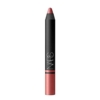ABOUT US
In the world of cosmetics, lipstick liner is a versatile tool that often takes a backseat to its more prominent counterpart, lipstick. However, its importance in enhancing and defining the lips cannot be overstated. Lipstick liner, also known as lip liner, not only provides a crisp outline but also contributes to the longevity and overall appearance of your lip color. In this comprehensive guide, we will delve into the art and science of lipstick liner, exploring its history, application techniques, and the various types available in the market today.










